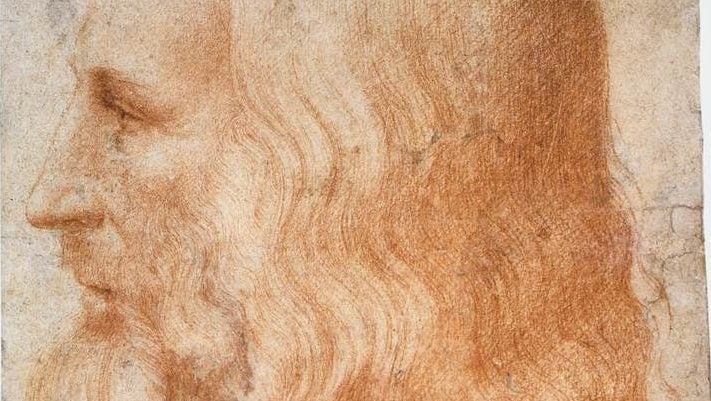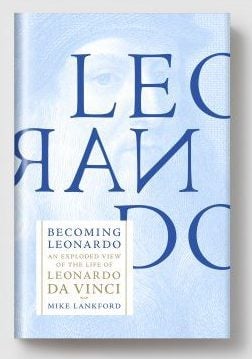Our cult of “genius” is blinding us to true genius all around, say Leonardo da Vinci’s biographers
Individuals canonized as “genius” are often thought of as supernaturally gifted, as if touched by the divine. But the religious root of the 14th century Latin word actually means “a guiding spirit,” present for all humans. And by forgetting its original meaning and looking only for people who are born with a quasi-mystical quality, we risk becoming blind to budding geniuses all around us.


Individuals canonized as “genius” are often thought of as supernaturally gifted, as if touched by the divine. But the religious root of the 14th century Latin word actually means “a guiding spirit,” present for all humans. And by forgetting its original meaning and looking only for people who are born with a quasi-mystical quality, we risk becoming blind to budding geniuses all around us.
True genius results from a rebellious attitude against compartmentalized thinking; it can also appear as a fleeting moment of insight, not necessarily a permanent condition of greatness. These ecumenical definitions are highlighted in two new biographies of the ultimate Renaissance avatar for genius, Leonardo da Vinci, a multi-tasking, ambidextrous polymath who bridged art and engineering.
Creativity that can be cultivated
In the forthcoming book, Leonardo da Vinci (Simon & Schuster), Walter Isaacson describes genius as a trait that can be cultivated. As president of the Aspen Institute, Isaacson has regular dalliances with dazzling minds and he boils down genius to one trait: creativity.
He says da Vinci’s ability to “apply imagination to intellect” is what makes him the quintessential model. The inspiration for his engineering projects, for instance were often drawn from his daydreams about nature. The aerodynamic wings of the bat inspired his hand glider, the physics of falling maple tree seeds shaped his helicopter prototype and the hard, indestructible shell of tortoises was his design metaphor for battle tanks.
“His facility for mixing observation with fantasy allowed him, like other creative geniuses, to make unexpected leaps that related things seen to things unseen,” explains Isaacson, who has also penned biographies about known geniuses such as Einstein, Benjamin Franklin and Steve Jobs.
“Leonardo’s genius was a human one,” emphasizes Isaacson. “It was wrought by his own will and ambition…It was based on skills we can aspire to improve in ourselves, such as curiosity and intense observation. He had an imagination so excitable that it flirted with the edges of fantasy, which is also something we can try to preserve in ourselves and indulge in our children,” he says. Unlike Einstein or Isaac Newton, da Vinci was self-taught and learned drawing through intense study of landscapes, cadavers, fossils, and weaponry.
Surmounting personal limits

In the provocative volume Becoming Leonardo: An Exploded View of the Life of Leonardo da Vinci (Melville House) Mike Lankford pushes Isaacson’s thesis and argues that da Vinci’s human frailty made him the genius we know today. “Modern biographers like to imagine Leonardo as a total man, utterly complete in mind and body, whereas the evidence, objectively considered, suggests someone who was terrifically lopsided,” writes Lankford.
A child of a slave and a notary, da Vinci didn’t have a privileged education. Growing up in the sleepy hill town of Vinci, couldn’t speak any languages except in regional Tuscan and could only effectively communicate by drawing. ”He was a profoundly limited person and yet through that limited medium, there was an explosive kind of reaction,” he explains.
Leonardo’s mirror writing, often fetishized by art scholars as a sign of extra-human abilities, is actually an aberration. Without formal education, the young da Vinci taught himself to write right to left, primarily to avoid tipping his inkwell. Neurologists today would diagnose this tendency as dyslexia, but his natural shorthand—often with erratic strokes and spelling errors—freed da Vinci to log ideas without being stymied by the traditional rules of penmanship.
To Lankford, genius is not a halo, but a flash of clarity. “Leonardo had stunning moments of genius, but he was not a permanent genius—no one is,”asserts the Oregon-based writer. In fact, da Vinci worked hard to arrive at his moments of clarity. Considered a late bloomer for arriving at the workshop of painter Andrea del Verrocchio at age 15, he was keenly conscious of the need to figure things out quickly to catch up with his peers. Writes Lankford, “the sense of lateness is the animating spark of every autodidact.”
Lankford defines genius as “finding one’s way into the light,” and building something out of it. His theory of fleeting, episodic genius recalls literary critic Ron Rosenbaum’s argument. “Maybe genius has been, if not democratized, more widely and thinly distributed, rather than concentrated in the hands of a precious few. Maybe there are more “one-hit wonders,” no less wondrous for being so.” he wrote in a 2009 Slate article.
Lankford also argues that a myopic understanding of the phenomenon blinds us from seeing everyday geniuses. If we limit our gaze to the work of known geniuses, we neglect to give breakthrough ideas a chance. He says that genius is often quashed because of today’s regimented social order, and poor barometers for intelligence such as standardized testing system. A boy like the young Leonardo da Vinci might not be given a chance to succeed today, he points out, writing, “A kid growing up wild in the country today, fifteen years old and unable to properly write or sign his name, is what social welfare workers would call ‘a problem.'”
“There are Leonardos among us,” he adds.